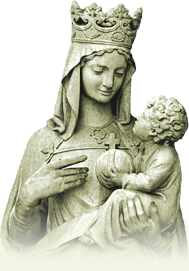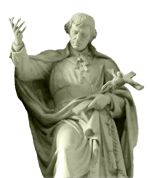Church
Liturgy reform: No going back
National Catholic Reporter
When the definitive history of the Second Vatican Council is finally written, beyond all squabbles over the council’s actual intent, one undisputed fact will stand -- that taking up the draft for the Constitution on the Sacred Liturgy as the first focus of debate had a decisive impact on the tone and direction the council took in all its subsequent deliberations. Though the discussion was liturgy, the real subject was ecclesiology -- the church’s understanding of itself.
By invoking the church in biblical terms as the pilgrim people of God and as the body of Christ, Vatican II set the stage for a crucial shift away from the juridical “perfect society” embodied in the unabashedly monarchical church of Trent. Nowhere would this be reflected more clearly than in the way the church prayed. The throne room protocols of the Tridentine Mass, the elevations, barriers, brocade, structures and language separating clergy from laity gave way to a worshiping community in which all the baptized were called to full, conscious, active participation. A new way of worshiping marked the beginning of the end of the vertical ecclesiology that for 500 years had shaped every aspect of the church’s life and ministry around hierarchical and clerical preeminence. The council carried the same biblical imagery and expansive approach into the major constitutions on the church and the church in the modern world.
For those who still ask if any of this matters and who might care, the recent book by Archbishop Piero Marini looking back over his 20 years as the personal liturgical planner for Pope John Paul II and, until recently, Benedict XVI, gives a glimpse into the tensions within the inmost circle of church leadership over liturgy as an expression of church identity on the world stage. Marini, most eloquent in his support of Vatican II reforms, managed to survive as the chief choreographer of events at which John Paul II presided. Those events were often richly inculturated, inclusive and ecumenical liturgies marked by full participation by the laity. John Paul II, known for his love of theater, evidently acceded to Marini and was in the end blessed by a remarkable funeral under Marini’s direction.
If liturgy has characteristically been below the radar for most Catholics, opponents of Vatican II knew from the outset that the one way to preserve Trent was to halt liturgical reform. To look back over the 42 years since the close of the council is to see that progress in the reform has been real but slow, and to admit that any awakening of Catholic laity to their full baptismal identity is still in the future. At the same time, those devoted at many levels to a pre-Vatican II model of the church have worked hard to bring down many aspects of liturgical reform. Frustrating the process of vernacular translations, crimping the rubrics for Mass to accentuate the ordained and, most recently, restoring the Tridentine rite, are among the more visible signs of successful retrenchment.
But there really is no turning back. “Vatican II helped us to rediscover the idea of the priesthood as something universal,” Marini said in an interview. “The faithful don’t receive permission from priests to participate in the Mass. They are members of a priestly people, which means they have the right to participate in offering the sacrifice of the Mass. This was a great discovery, a great emphasis, of the council. We have to keep this in mind, because otherwise we run the risk of confusion about the nature of the liturgy, and for that matter, the church itself.”
What they have always known in Rome is important for all of us to know: Liturgy is the visible expression of the arrangement of power. The 2,500 bishops of Vatican II, perhaps surprising themselves, began the process of opening up the church to its own members and to the world. We all have a say in the kind of church we are. The reform of the church was a struggle worth undertaking more than 40 years ago, and it is a challenge each of us, in our own way and in our own faith communities, should prize and not lose sight of today.
Para citar este texto:
"Liturgy reform: No going back"
MONTFORT Associação Cultural
http://www.montfort.org.br/eng/veritas/igreja/reforma_liturgia/
Online, 28/04/2025 às 01:10:08h








